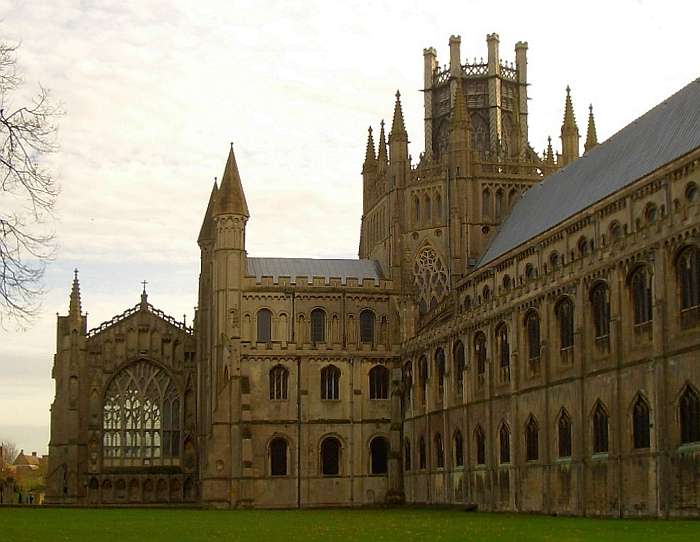
A view of the Octagon and Lantern, with the Lady Chapel to the left, Ely Cathedral. The early 14c. Octagon was extensively restored by George Gilbert Scott, 1847 onwards. Ely, Cambridgeshire. Photograph and text by Jacqueline Banerjee. 2008. [You may use this image without prior permission for any scholarly or educational purpose as long as you (1) credit the photographer and (2) link your document to this URL in a web document or cite the Victorian Web in a print one.]
The octagon is an ancient and highly symbolic shape in the history of church architecture, suggesting the eighth day, or time beyond worldly time. By linking time with eternity, and earth with heaven, it represents the Resurrection. George Gilbert Scott has drawn attention to Ely's Octagon by elaborating on its light source, a graceful timber "lantern." His work on this "curious corona," as Pevsner puts it (342), was perhaps his most readily noticeable contribution to the cathedral's external appearance.
The mid-fourteenth-century Lady Chapel has been much admired: "This beautiful building, with its wide soaring windows, is almost a glass house with a stone frame," writes M. S. Carey (11). Beyond some reglazing and minor alterations to the church furnishings, Scott does not seem to have done much to its intricately decorated interior, itself a testimony to the sensitivity and restraint of his restoration work. According to Michael W. Brooks, he did not believe in restoring "carved work or sculpture" (270).
Other Views
- Ely Cathedral, the West Tower
- Ely Cathedral from the South-East
- St Catherine's Chapel, rebuilt by Scott
- Interior of the Octagon, showing Scott's screen (contemporary engraving)
- The nave, looking east
- The nave ceiling, painted 1858-65
- Victorian scrollwork on the West Door
- An example of early brick diapering on the Bishop's Palace
- Ely from under the Railway Bridge, by Jospeh Pennell
Sources
Brooks, Michael W. John Ruskin and Victorian Architecture. London: Thames and Hudson, 1989.
Carey, M. S. Ely Cathedral. Crawley: Pitkin, 1973.
Pevsner, Nikolaus. The Buildings of England: Cambridgeshire. Harmondsworth: Penguin, 2nd ed. 1970.
Last modified 29 July 2008